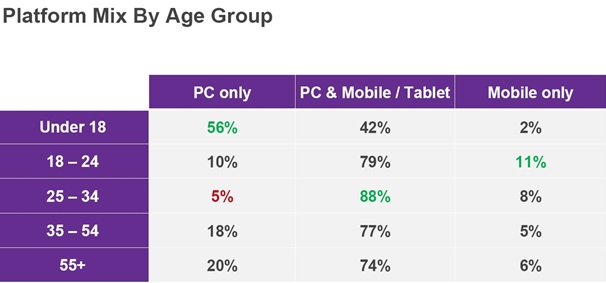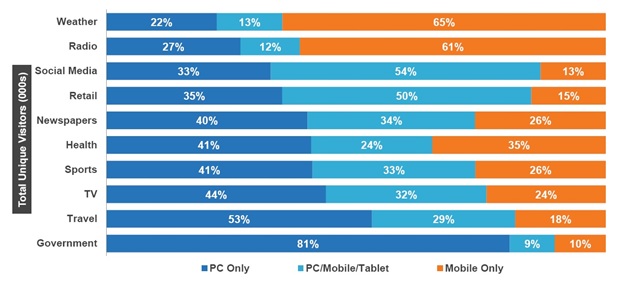ind statistics and facts of Cross Channel Digital Analytics in the Retail Industry. We provide detailed analysis of digital analytics in retail. In 1995, a new era of retail industry started, called e-commerce, in which, the retailer sell its product or services using computer networks, such as the Internet. After a few years, e-commerce has reached critical mass and changed the way of shopping to a great extent. Each year, large number of customers shifts their shopping tactics to e-commerce and starts purchasing the products and services online.
Table of Contents
Cross Channel Digital Analytics
Moreover, with the advancement of technologies, more and more retailers are also started providing seamless shopping experiences to their customers across multiple channels, such as marketplaces, personal computer (PC), mobile and tables. Now days, the cross-channel integration has become a competitive necessity for the retailers, without this it might be difficult for a retailer to retain their market place.
Retailers can create direct link with their customers with the help of digitisation and understand their customers’ behaviour. However, understanding the customer behaviour is very complex process in cross channel platforms, which helps the retailer in recognising the target customers across different channels. According to ComScore, “93% of consumers in UK aged between 18 to 34 no longer rely on computer based internet access exclusively”.
Explore Free eCommerce WordPress Themes for Small Websites
This means, if a retailer is offering products or services that are mainly used by the consumers between 18 and 34 age group then this retailer has to focus on providing its product or services on the channels other than the computer (for example mobile and tablet). Therefore, it is very important for a retailer to know the target customers by their demography, interests, and shopping behaviour. Customers today want the flexibility of finding and purchasing the products or services irrespective of time and location.
Cross Channel Digital Analytics
Media-Saturn and Best Buy are amongst the companies that struggled to integrate the cross channel platform, but failed to overcome its challenges. As a result, these companies faced extreme fall in their revenue. These companies are the example that highlights the challenges of the retail industry where cross channel integration is an essential part.
Following is a graph of platform mix by age group.

Creating a seamless customer experience across all platforms should be the main objective in Retail Industry. However, there are many challenges in calculation of Return On Investment (ROI) and conversion tracking in cross channel. Smart integration of cross channel digital analytics helps the retailers to overcome these challenges. It is important to analyse and calculate each function of retail commerce, which also includes refunds and affiliates. Most marketers do not integrate cross channel advertising cost in ROI calculation, which is important for strategic decision making on marketing expenditure. It can be easily achieved by uploading cost data or mapping cross channel entities in digital analytics platform.
Another challenge in integrating the cross channel retailing is the tracking interaction of a user through different platforms, such as PC, mobile, or tablet. It is easy to track if the user is logged in the system but difficult if user is accessing system anonymously. Following is a graph of Content Consumption by Platforms in respective Industries.

Most organizations are providing real time customization for customers using digital analytics. Marketing automation, real time customization, advanced and seamless user experience are few key points for digitalization in the retail industry. Small and medium organizations enjoying competitive advantages after implementing better user experience in their system.
Digital Analytics in Retail Industry for Predictive Marketing
Digital analytics is the key of success in predictive marketing. We can easily predict success of any campaign and maximize the return on investment with the help of attribution modeling and advanced segmentation. Real time web analytics and user specific customization is the future of retail industry. Digital analytics play vital role in collecting and analyzing user’s data, buying behavior, shopping preferences and other important insights.
Attribution Modelling
Digital analytics should be capable of attribution modelling so that right credit can be transferred to channels. Sales and conversion take place after many interactions from different sources and channels.
Advanced Segmentation
Marketers prefer to view reports which can provide better insights for decision making. Many digital analytics tool provide freedom of advanced segmentation. Marketers can view specific reports based on demography, technology and channels. Segmentation provides freedom to view and analyze separate reports for mobiles, tablets, PC and laptops. It is very important segment your customers based on different criteria and target them with relevant content.
Real Time Analytics
It is always good to be one step ahead your competitors. In the retail industry it is better to know your customer in the real time. So marketers should react instantly to visitor trends with real-time analytics reports that give you real time engagement. With the help of real time analytics marketers will be able to figure out what consumers want, then they can deliver personalised and relevant content across any different channels.
